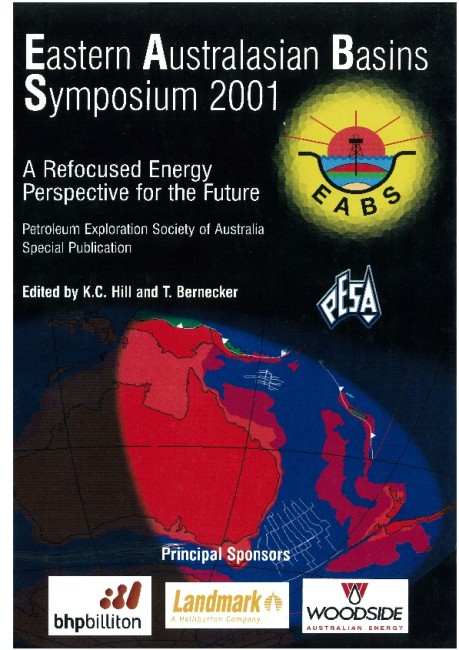Publication Name: Eastern Australian Basins Symposium 2001
Authors: R.D. Shaw, J.D. Alder and N. Aadil
Date Published: November 2001
Number of Pages: 33
Reference Type: Magazine Article
Abstract:
The Clarence-Moreton Basin is a major Late Triassic to Jurassic/EarlyCretaceous depocentre in northeastern New South Wales and southern Queensland. Its eastern extent was believed to lie close to, and form a minor part of, the present-day coastline. Interpretation of recently reprocessed 1969 industry data recorded off the southern New South Wales portion of the Clarence-Moreton Basin, suggests an offshore continuation.Four sedimentary packages have been identified across the shelf from the reprocessed seismic reflection data. The upper two packages are prograding sediment wedges, which elsewhere are correlated with post-breakup (Tertiary to Recent) deposition. They are distinguished from two deeper packages in which the sediments are dipping and fault-bound. In turn, these overlie a deeper zone with no coherent lateral reflectivity which is interpreted as basement.
The geometry and distribution of reflections within the two deeper packages are consistent with deposition prior to the sag phase of Tasman margin evolution. Most likely, these sediments accumulated during the syn-rift phase of Tasman margin evolution, or are remnants of early Mesozoic intra-cratonic deposition, perhaps easterly extensions of the Clarence-Moreton or Ipswich Basin sediments. Alternatively, they might be correlated with the southeasterly continuation of Nambour Basin sediments.
With total sediment thickness approaching 2.0 seconds TWT (-2,500 m), the petroleum prospectivity needs to be reassessed with modern seismic coverage. Source rock and reservoir sequences are known in Clarence-Moreton and Ipswich Basin sequences. Tasman margin syn-rift sequences contain the principal source rock facies in the
Gippsland Basin. The potential juxtaposition of a Tertiary cover across Clarence-Moreton Basin sediments in the offshore also provides opportunities for top seal and Tertiary trapping mechanisms which have no parallel onshore. Mapped antithetic, sinuous north-northeast trending normal faults provide potential for basement fault-related traps within the three deeper packages, including rotated normal fault blocks. Compressional reactivation and associated flexuring provide enhanced fault- independent closures as well as additional faulting potential across the outer shelf and slope.


